Ocean pollution is causing severe harm to some of the most vulnerable marine species. Plastics, chemicals, and other pollutants are threatening the delicate balance of marine ecosystems. Rare species that already face natural challenges are now at greater risk. These creatures are crucial to the biodiversity of our oceans. Below are some of the rarest marine species facing this growing danger.
Vaquita
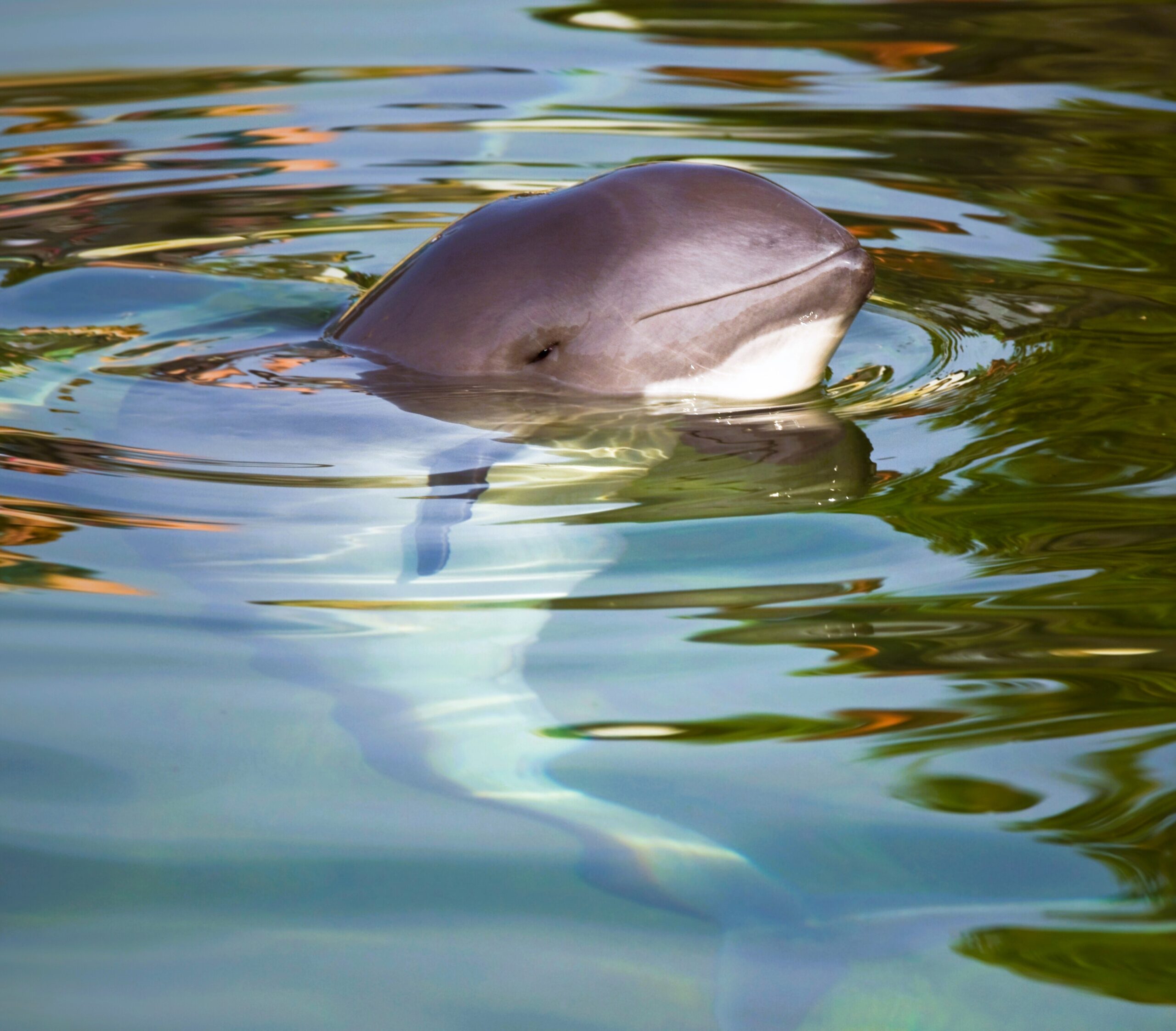
The Vaquita is the world’s smallest and most endangered marine mammal. It lives only in the northern part of the Gulf of California. The species is critically endangered due to entanglement in illegal fishing nets. Vaquitas are shy and elusive, making it difficult to track their numbers. They are distinctive with their dark rings around their eyes and small size, about 5 feet long. Fewer than 20 individuals remain, making it a race against time to save them.
Hawaiian Monk Seal
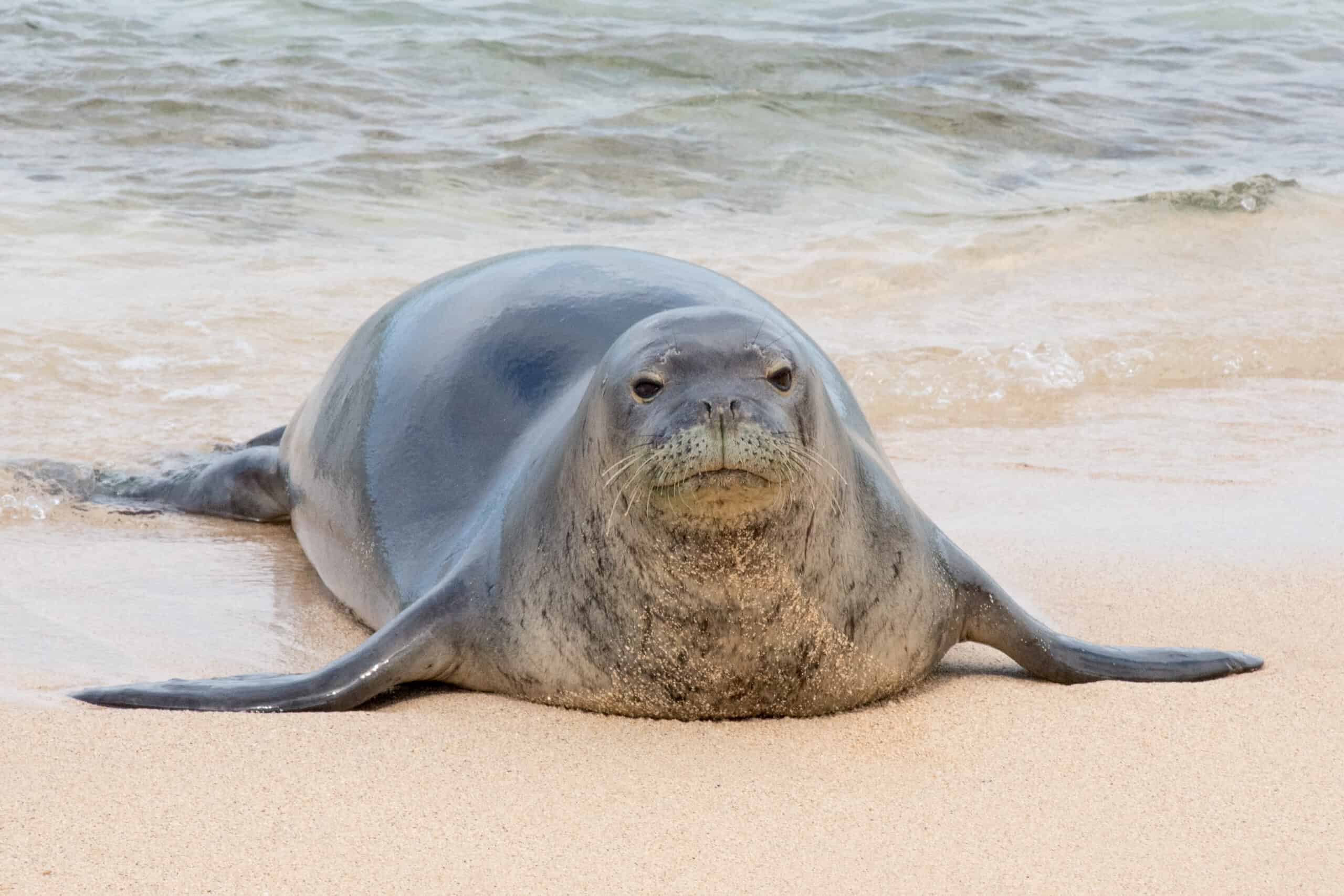
The Hawaiian Monk Seal is one of the rarest seals on Earth. It is native to the Hawaiian Islands and relies heavily on coral reefs and atolls for survival. Pollution, habitat destruction, and fishing nets have caused a significant decline in their population. Monk seals are distinctive for their grey or brown coats and can grow up to 7 feet in length. Human activity continues to push them closer to extinction, with only about 1,400 individuals left in the wild.
Dugong
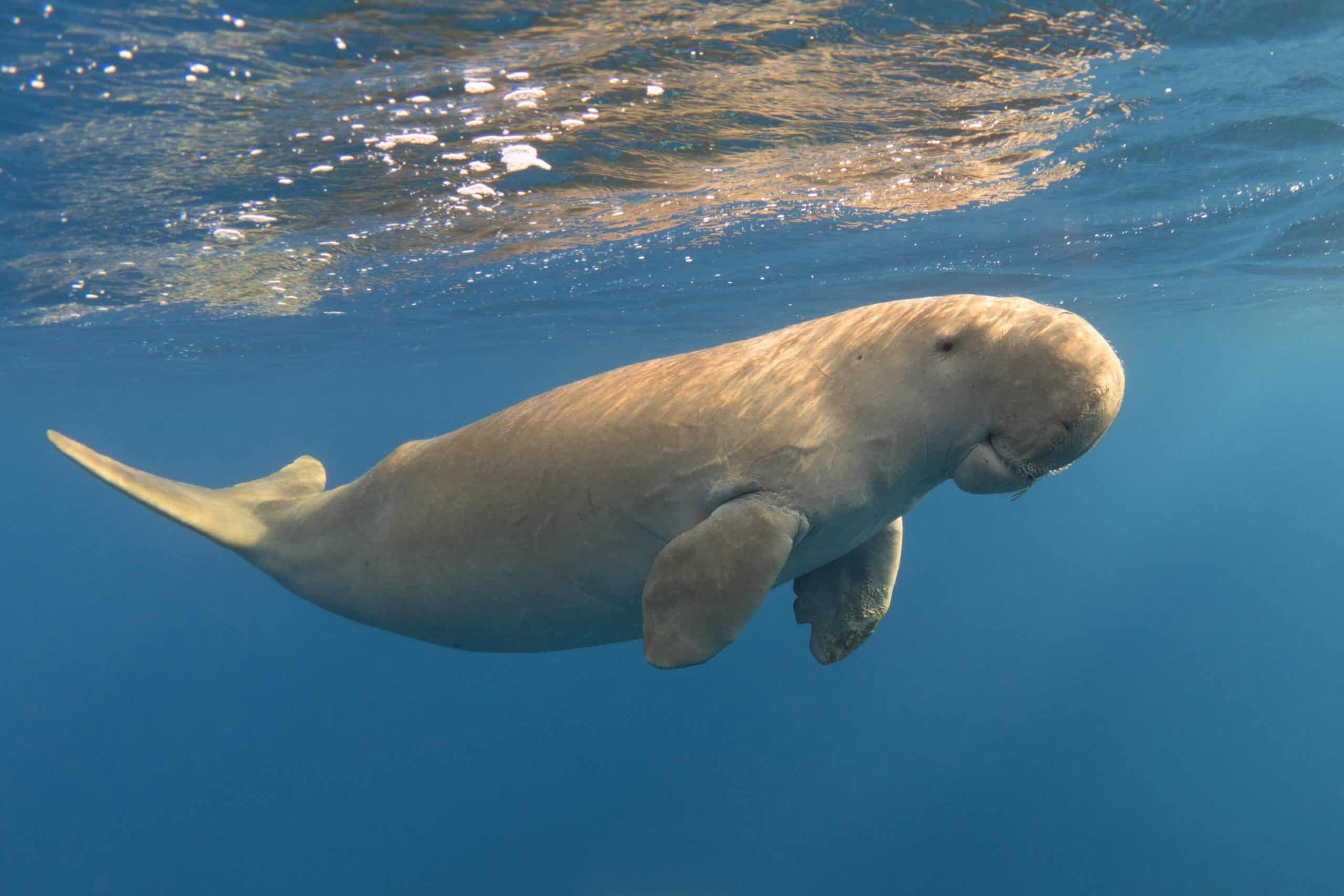
Dugongs are gentle, slow-moving herbivores, often referred to as “sea cows.” They are found in coastal waters throughout the Indo-Pacific region. Habitat loss, boat strikes, and pollution have severely impacted their numbers. Dugongs rely on seagrass meadows, which are rapidly disappearing due to coastal development and pollution. They are large creatures, growing up to 10 feet long, and are closely related to manatees.
Whale Shark
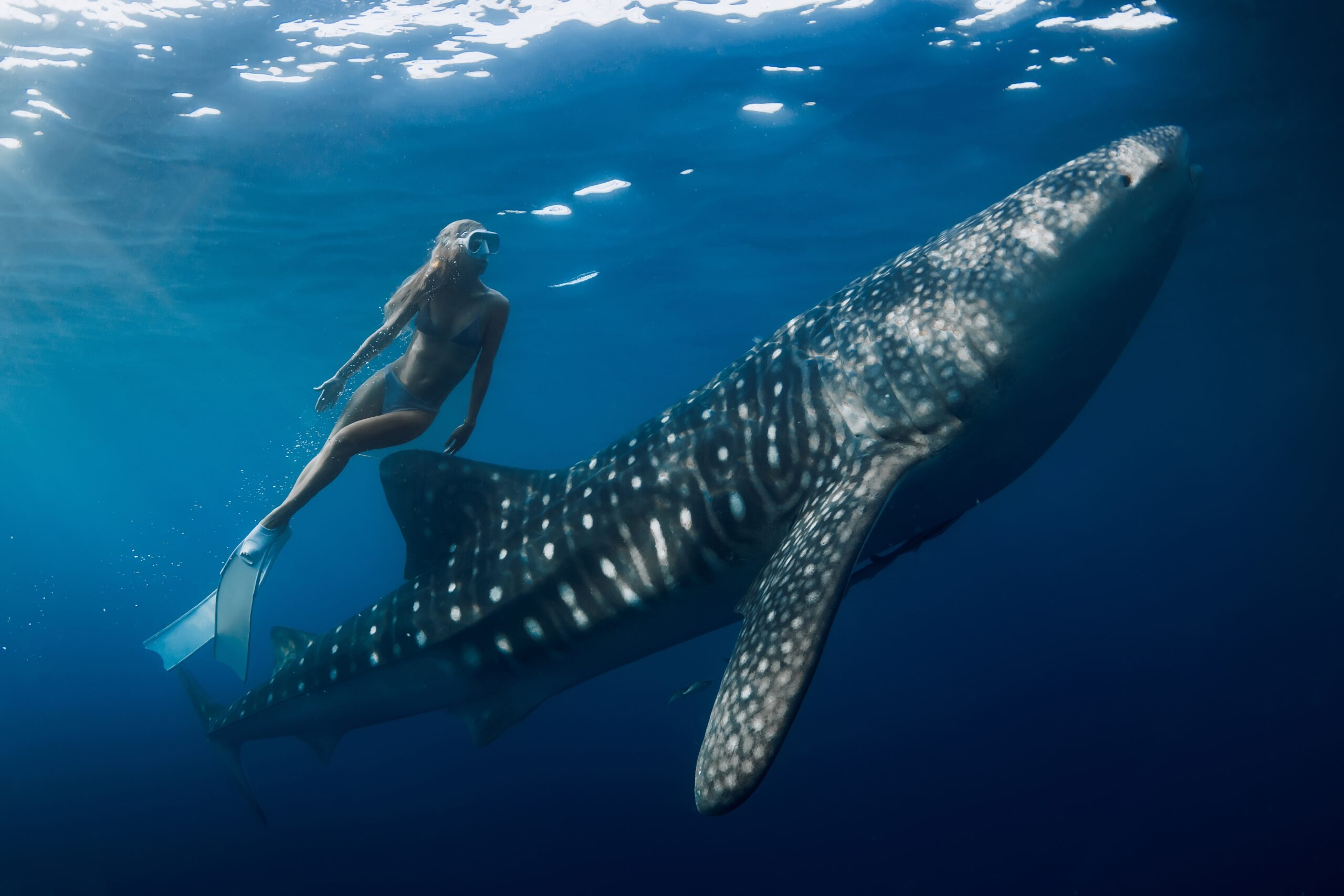
Whale sharks are the largest fish in the ocean, but they are gentle giants. They primarily feed on plankton and small fish and are found in tropical oceans worldwide. Overfishing, pollution, and boat collisions have put their survival at risk. Whale sharks can grow up to 40 feet long, with unique spotted patterns across their bodies. These magnificent creatures are increasingly rare, with declining populations across their natural range.
Northern Right Whale
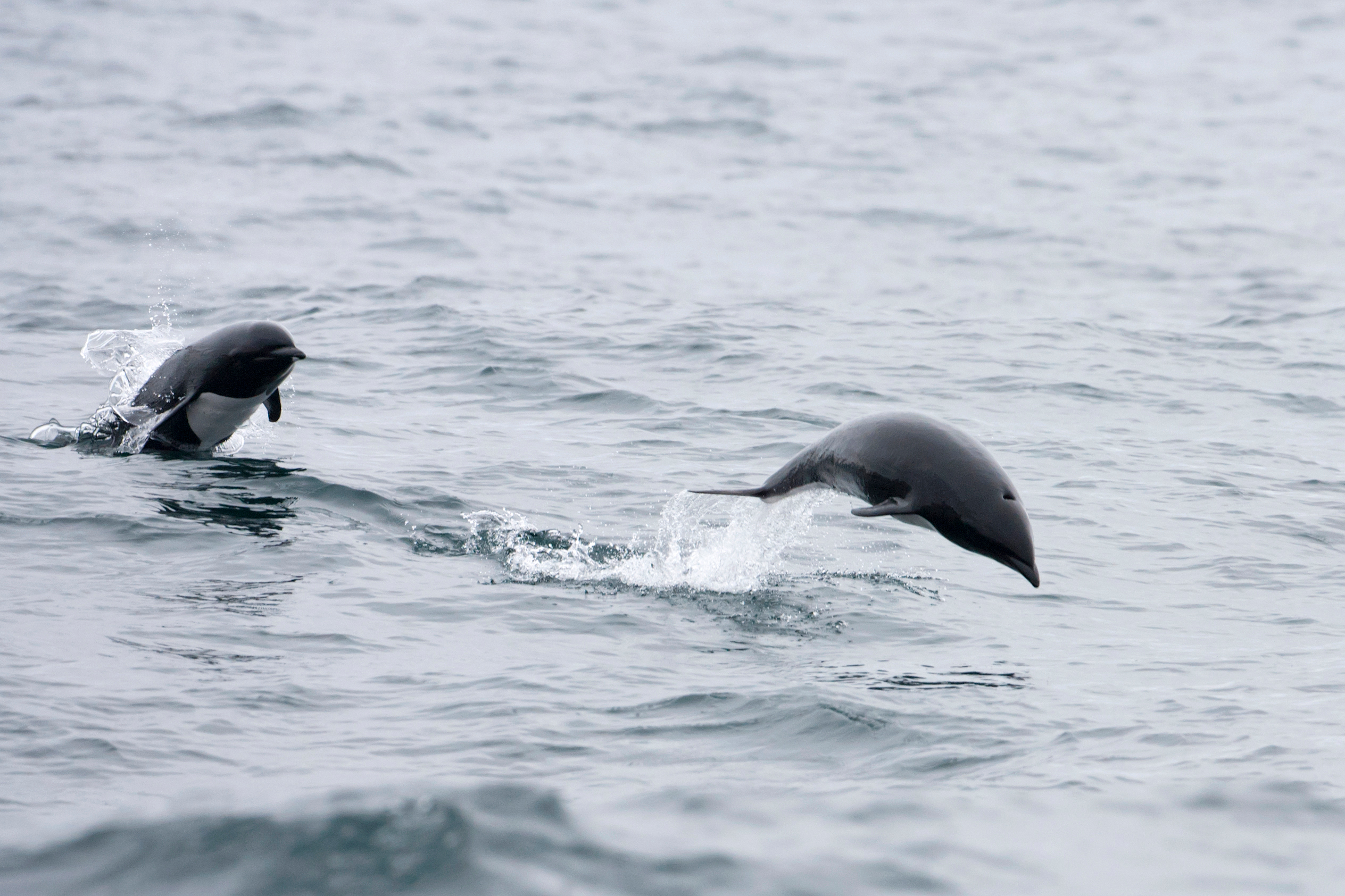
The Northern Right Whale is one of the most endangered species of whale. It inhabits the North Atlantic Ocean and faces significant threats from ship strikes and fishing gear entanglements. Pollution, particularly chemical runoff and plastic waste, further threatens their survival. Right whales are massive, reaching lengths of up to 52 feet. Only about 350 individuals remain, making them critically endangered.
Leatherback Sea Turtle
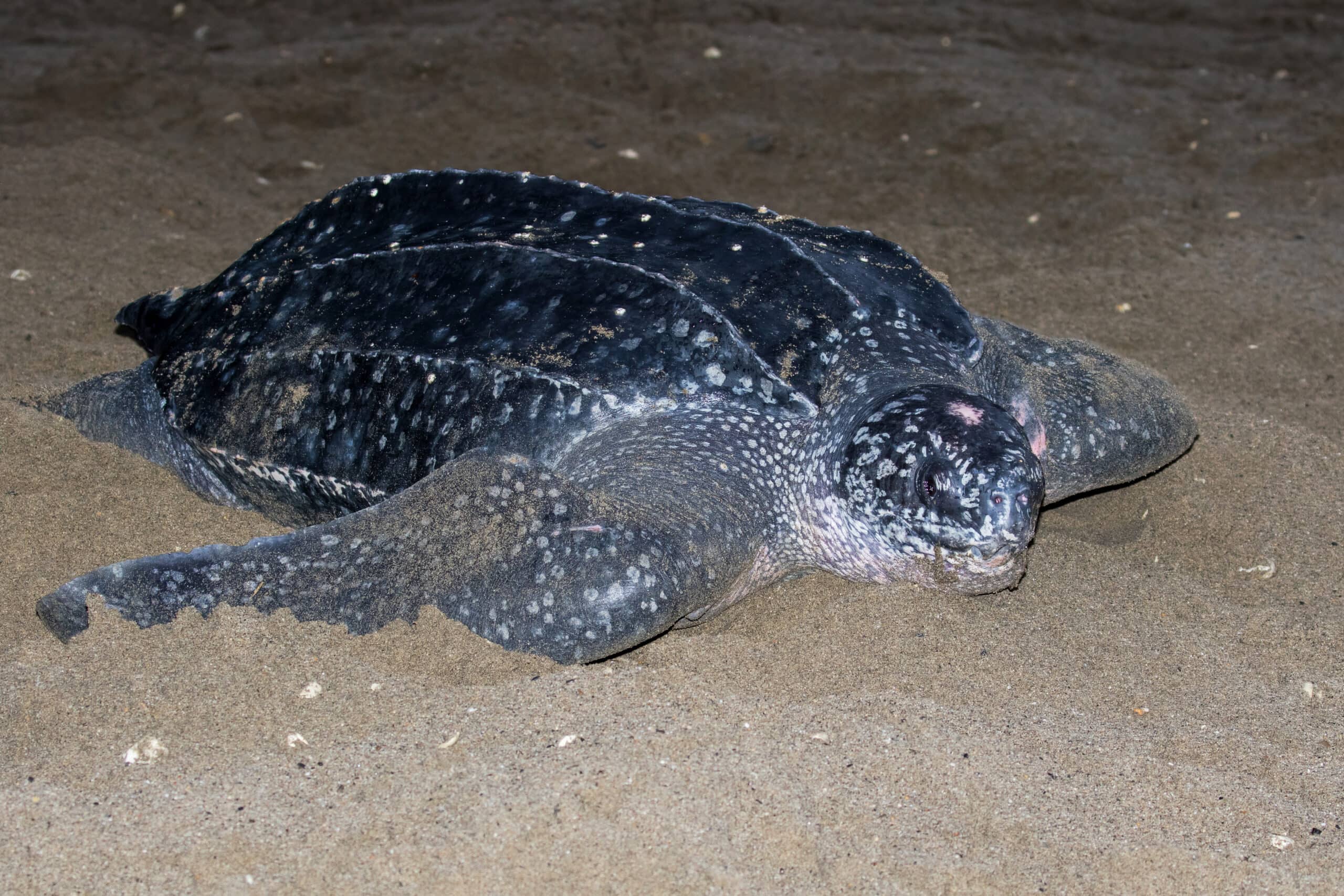
Leatherback Sea Turtles are the largest sea turtles, known for their distinctive soft, leathery shells. These turtles are highly migratory, traveling across oceans to nest and feed. Pollution, especially plastic, is a major threat as they often mistake it for jellyfish, their primary food source. Leatherbacks can grow up to 7 feet long and weigh as much as 2,000 pounds. Their population has drastically declined due to habitat loss, fishing bycatch, and marine pollution.
Green Sea Turtle
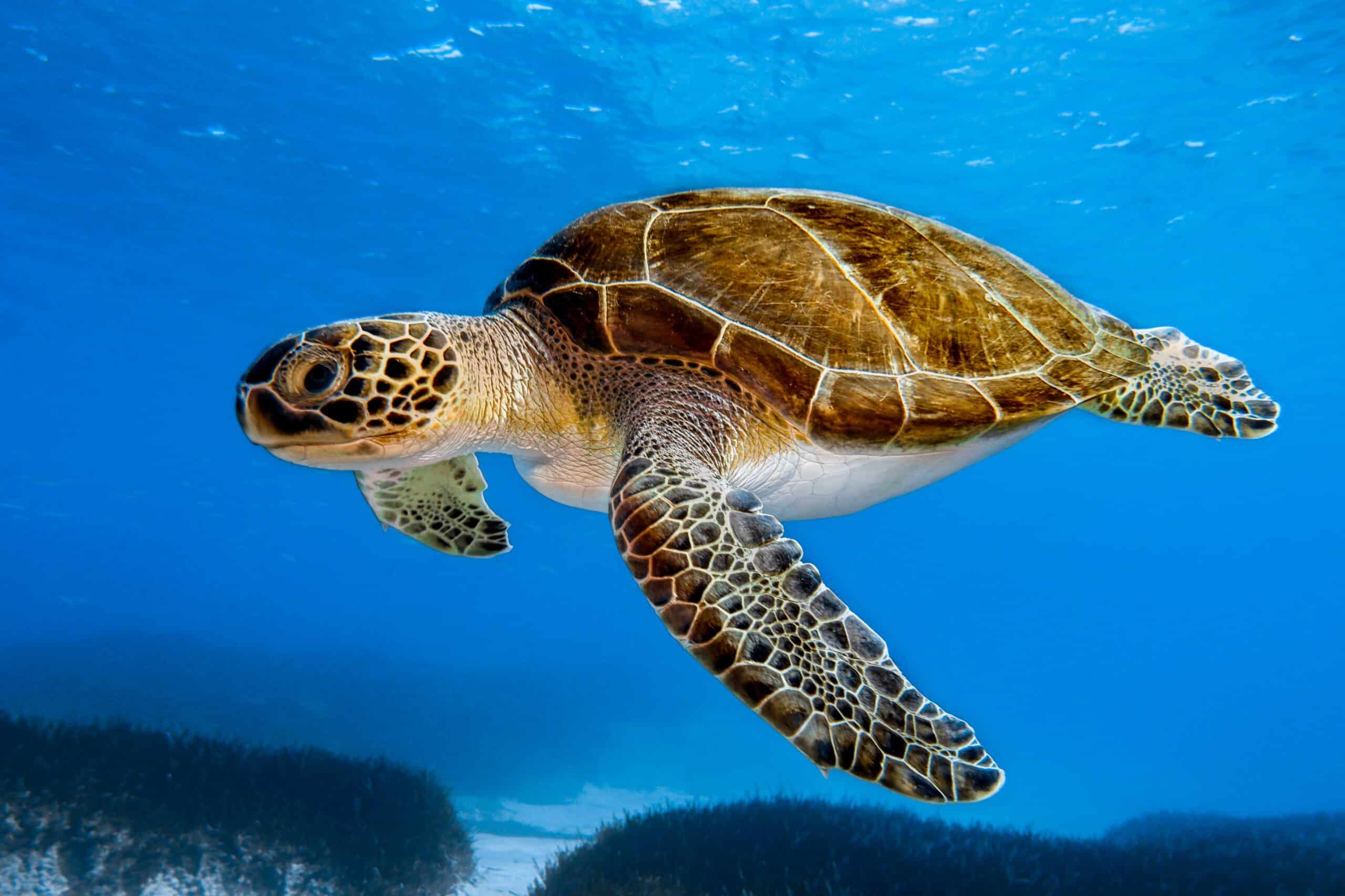
Green Sea Turtles are named for the green color of their fat, not their shells. They are found in tropical and subtropical waters around the world. Pollution and habitat degradation are major threats, particularly as plastic debris impacts their feeding and nesting grounds. Green sea turtles can grow up to 4 feet long and weigh up to 700 pounds. Despite conservation efforts, their numbers continue to fall due to human activities.
Hawksbill Turtle
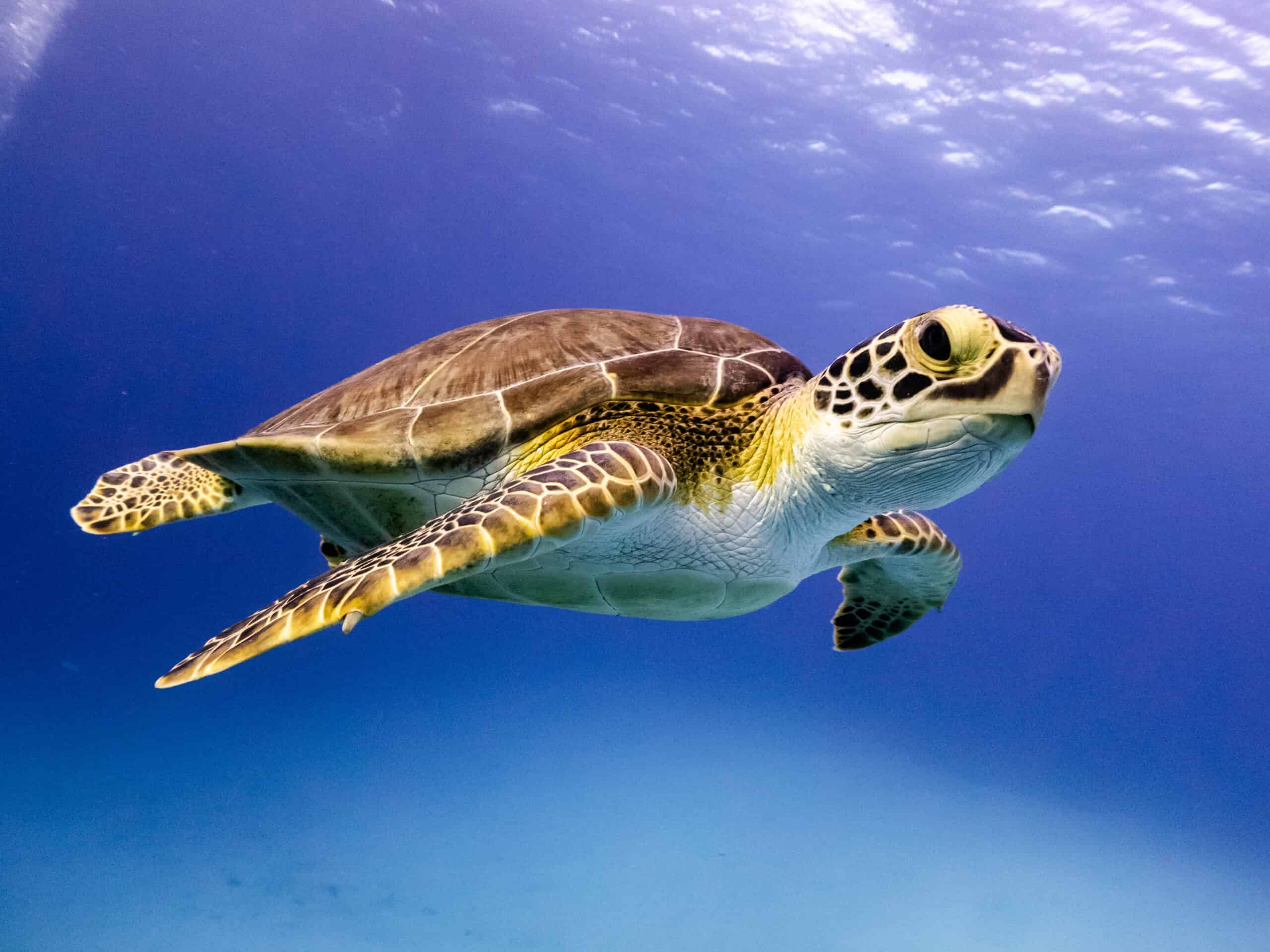
Hawksbill Turtles are critically endangered and easily recognized by their sharp, pointed beaks. They inhabit coral reefs, primarily in tropical regions, where they feed on sponges. Ocean pollution, particularly oil spills and plastic waste, has significantly impacted their population. Hawksbill turtles are smaller than other sea turtles, typically measuring around 3 feet long. Their unique shells are also targeted by illegal wildlife trade, further pushing them toward extinction.
Blue Whale
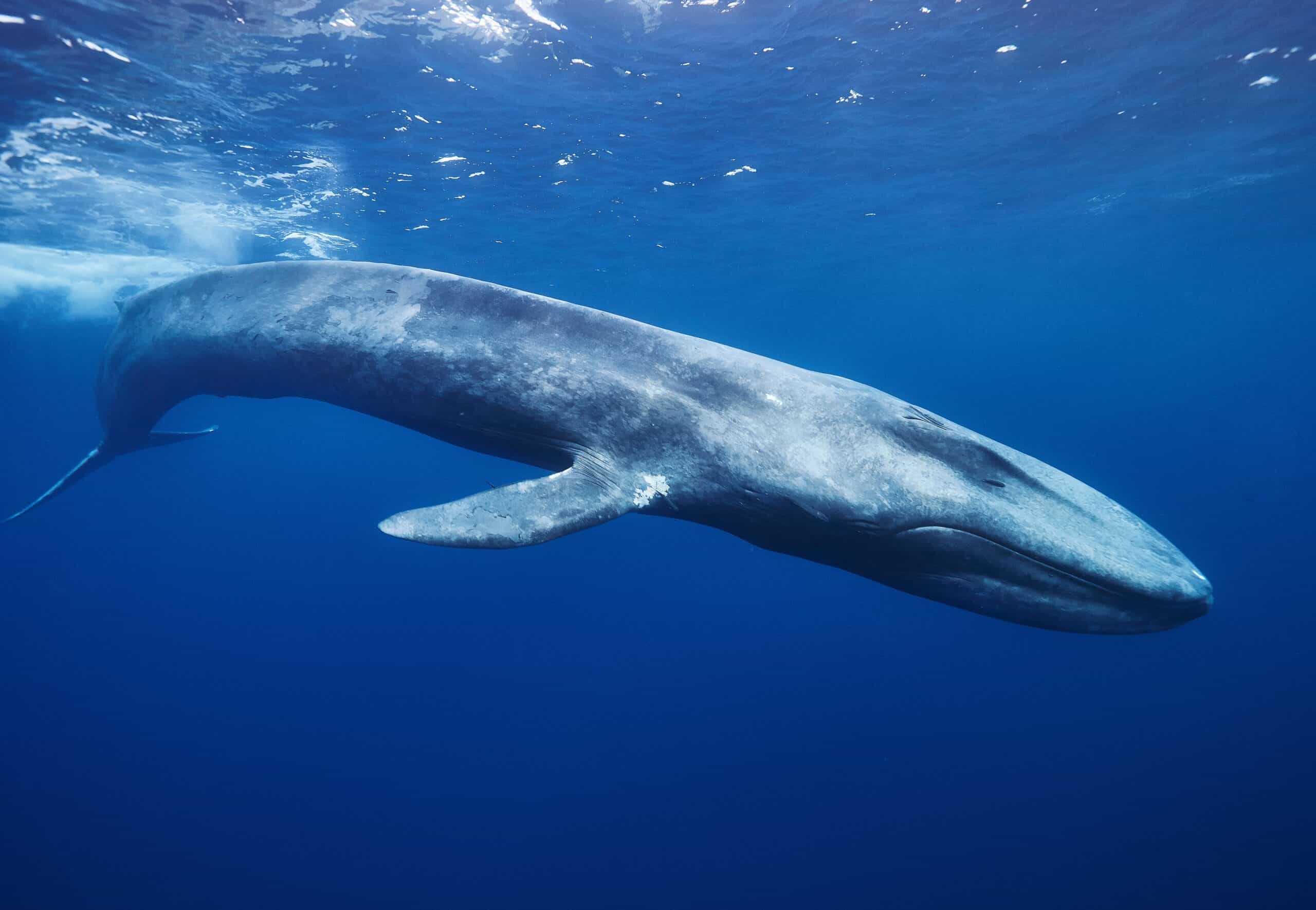
The Blue Whale is the largest animal on Earth, reaching lengths of up to 100 feet. Despite its massive size, it feeds mainly on tiny krill. Ocean pollution, including chemical runoff and noise pollution from ships, has significantly impacted their population. Blue whales are found in oceans worldwide, but their numbers have drastically decreased due to whaling and habitat disruption. Although they are protected now, pollution continues to be a major threat to their recovery.
Giant Manta Ray
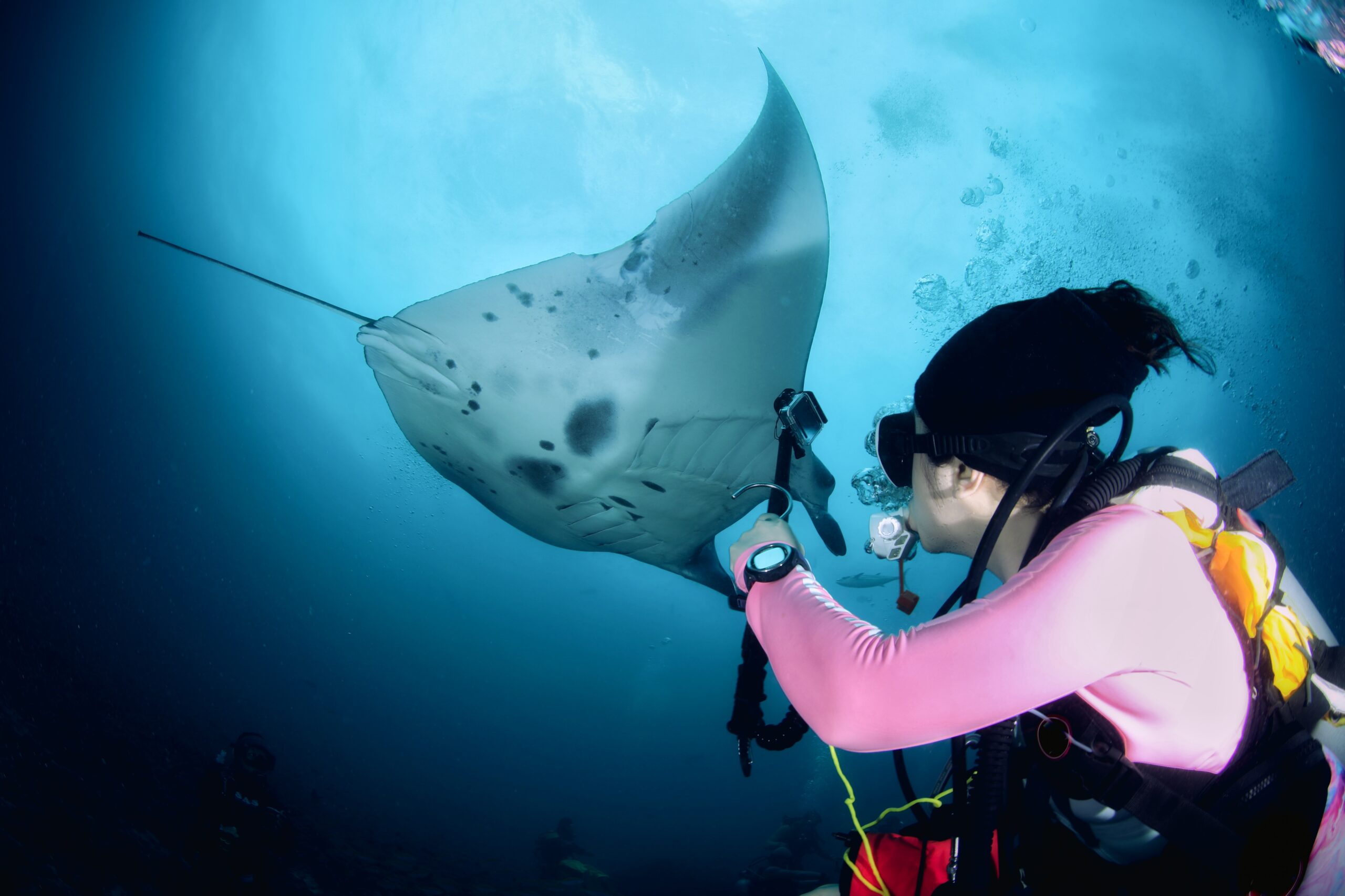
The Giant Manta Ray is one of the largest species of rays in the ocean. They are filter feeders, primarily consuming plankton and small fish. Unfortunately, ocean pollution, particularly microplastics, contaminates their food sources. These rays are highly migratory, often crossing areas affected by oil spills and chemical waste. Their population is rapidly declining due to habitat destruction and pollution.
Scalloped Hammerhead Shark
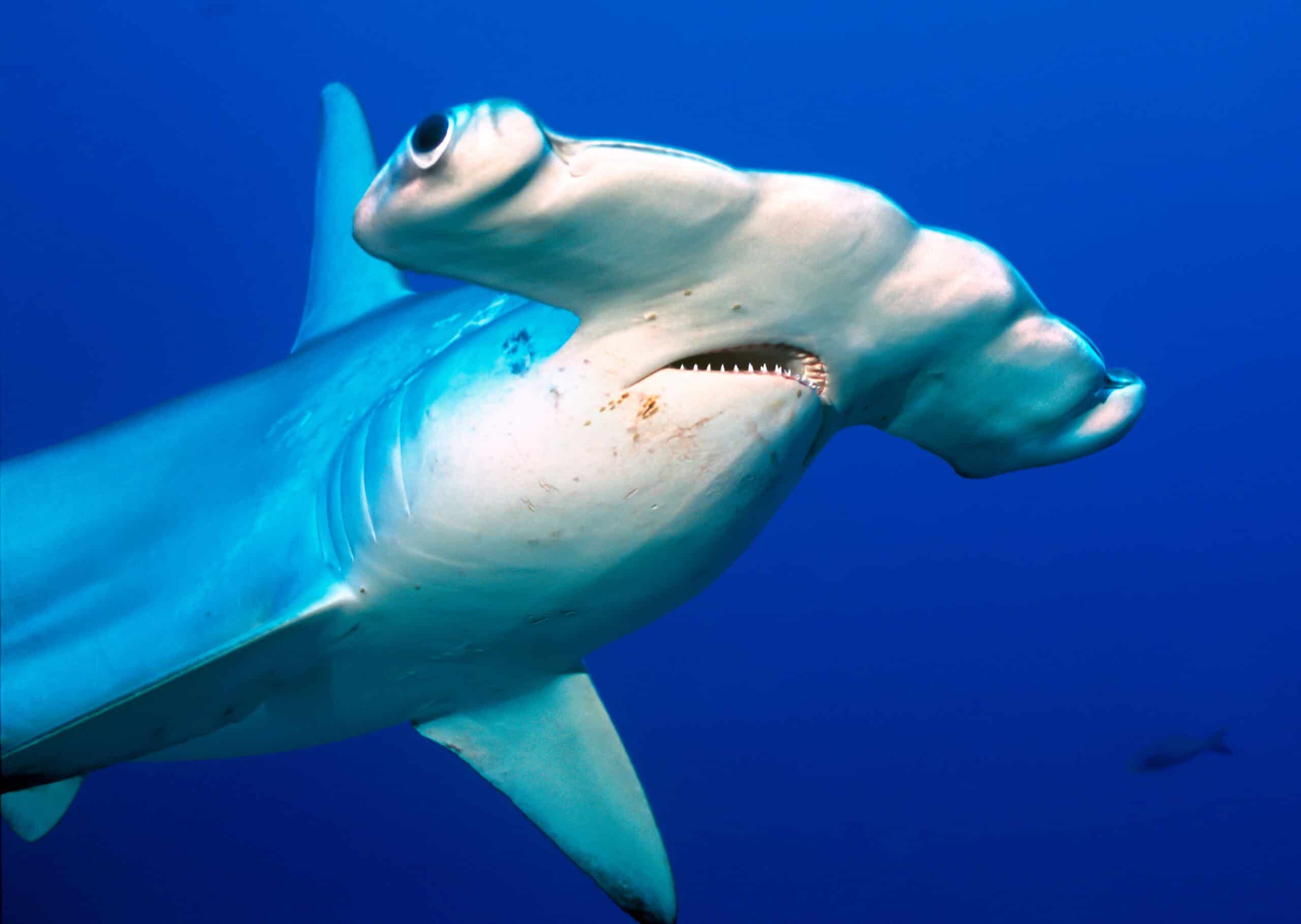
The Scalloped Hammerhead Shark is easily recognizable by its distinctive hammer-shaped head. They are often found in coastal waters and estuaries, which are heavily polluted by human activity. Overfishing and bycatch are major threats to their survival. Pollution from plastics and toxic runoff also harms their prey and habitat. This species is now critically endangered due to these factors.
Napoleon Wrasse
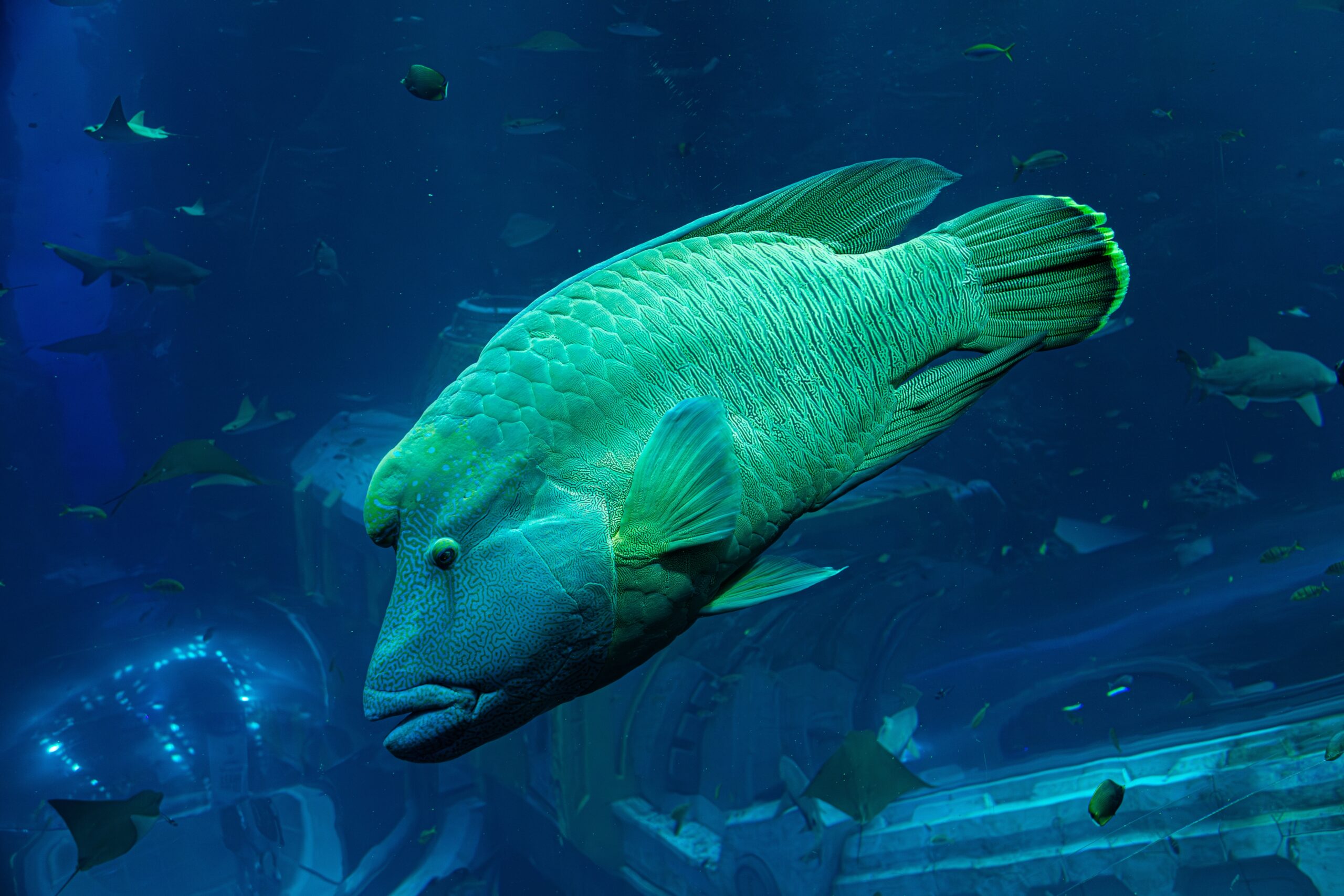
The Napoleon Wrasse is a large reef fish with vibrant colors and a distinct hump on its forehead. It is primarily found in coral reefs, which are increasingly threatened by pollution and climate change. Water contamination and illegal fishing practices have significantly reduced their population. These fish play a key role in maintaining the health of coral ecosystems. Conservation efforts are vital to protect this species from extinction.
Kemp’s Ridley Sea Turtle
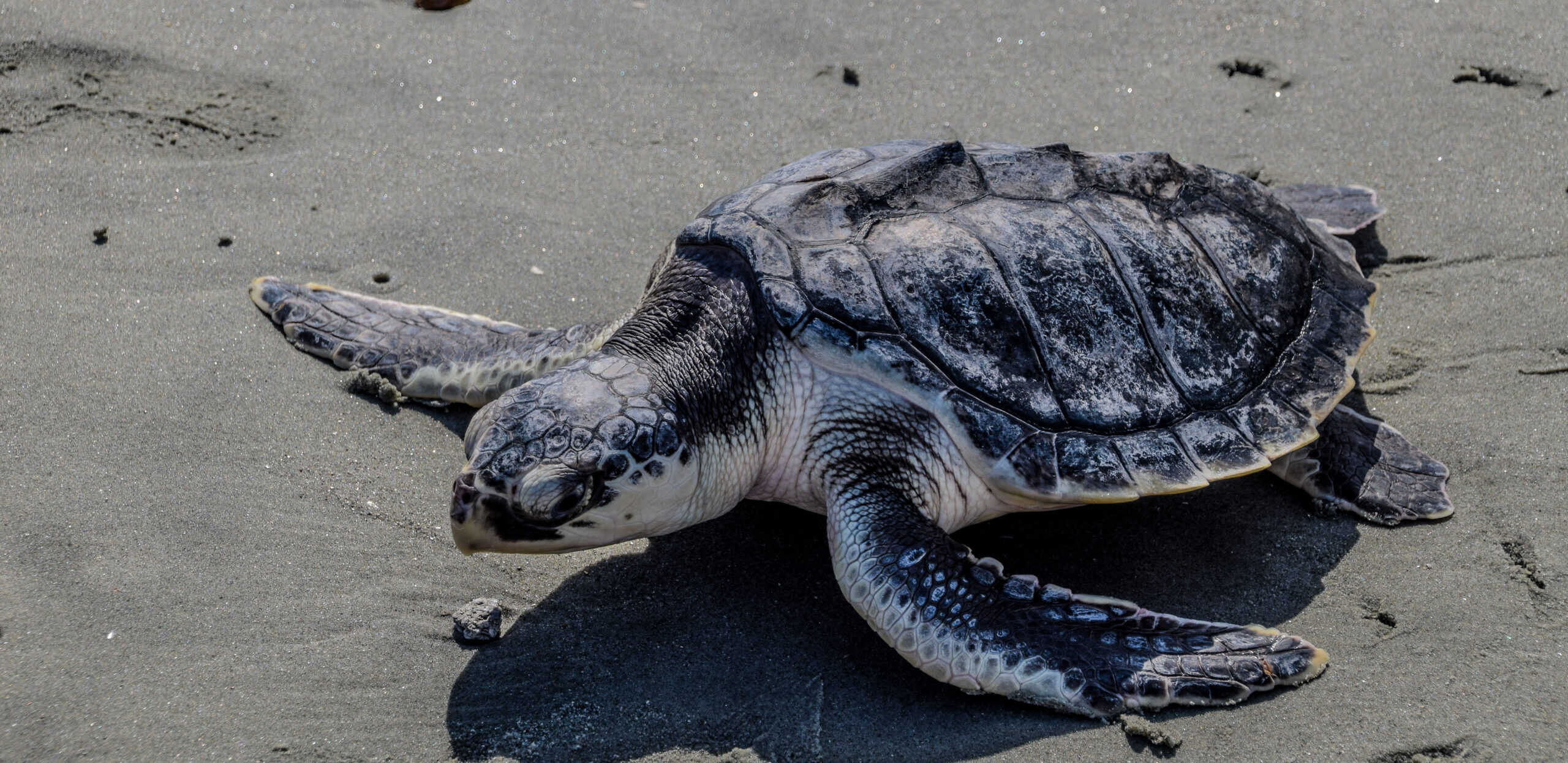
Kemp’s Ridley Sea Turtles are the smallest and most endangered of all sea turtles. They are frequently found in shallow coastal waters, where pollution levels are high. Plastic waste, oil spills, and discarded fishing gear pose significant risks to their survival. These turtles often mistake floating plastic for food, which leads to serious health issues. Their nesting beaches are also threatened by rising sea levels and contamination.
Pygmy Seahorse
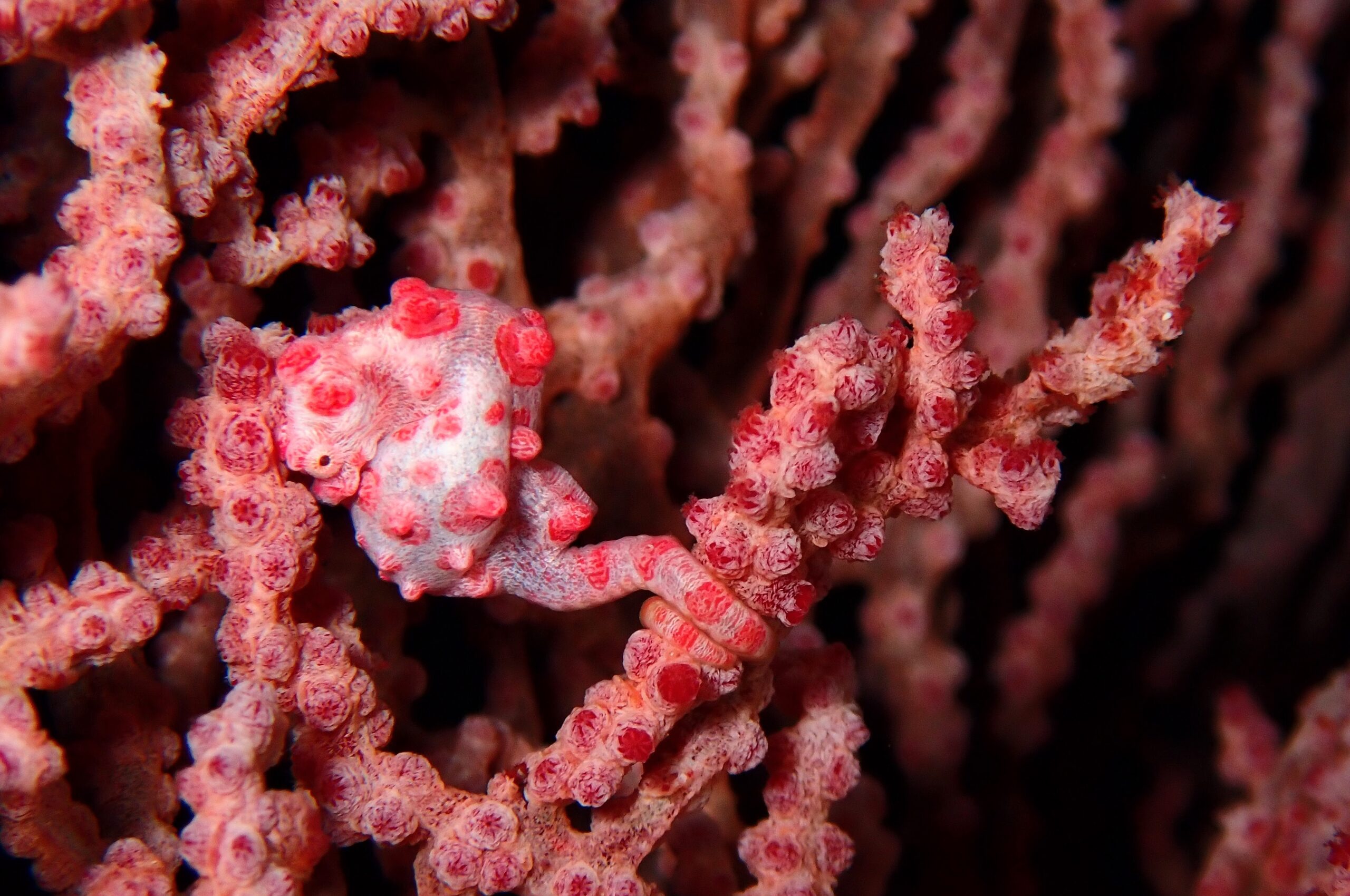
The Pygmy Seahorse is one of the smallest marine creatures, blending perfectly with its coral reef habitat. Pollution, especially from sediment runoff and chemicals, is damaging the coral reefs they depend on. These seahorses are highly vulnerable due to their small size and limited mobility. Coral bleaching, driven by pollution and climate change, is further pushing them toward extinction. Conservation efforts are crucial for their survival.
Beluga Whale
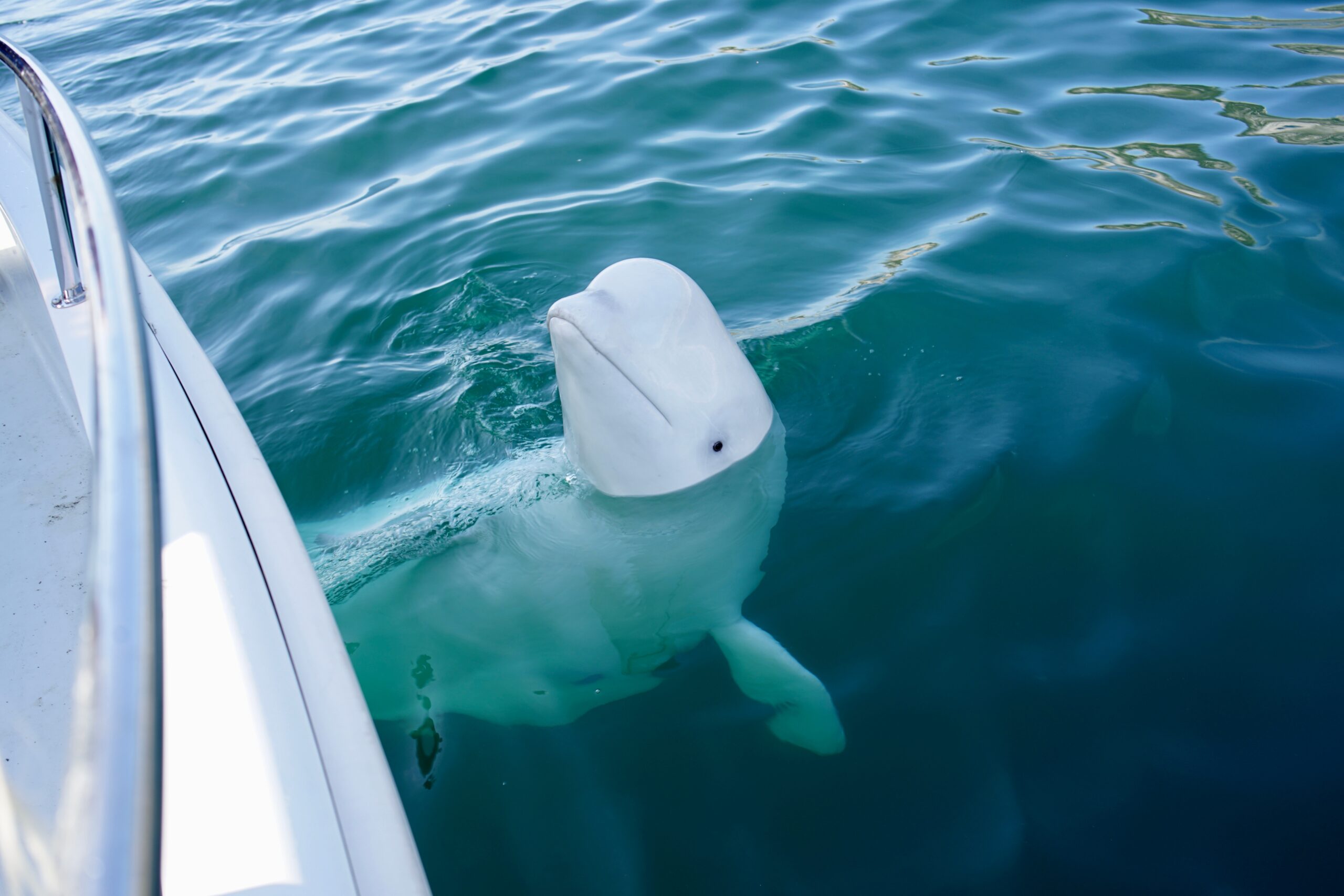
Beluga Whales are known for their white color and friendly nature. They inhabit Arctic and sub-Arctic waters, where industrial pollution is on the rise. Oil spills, toxic chemicals, and noise pollution from ships disrupt their natural habitat. These whales rely on echolocation for navigation, which is heavily affected by noise pollution. Belugas are facing increasing threats as ocean contamination worsens.
Indo-Pacific Finless Porpoise
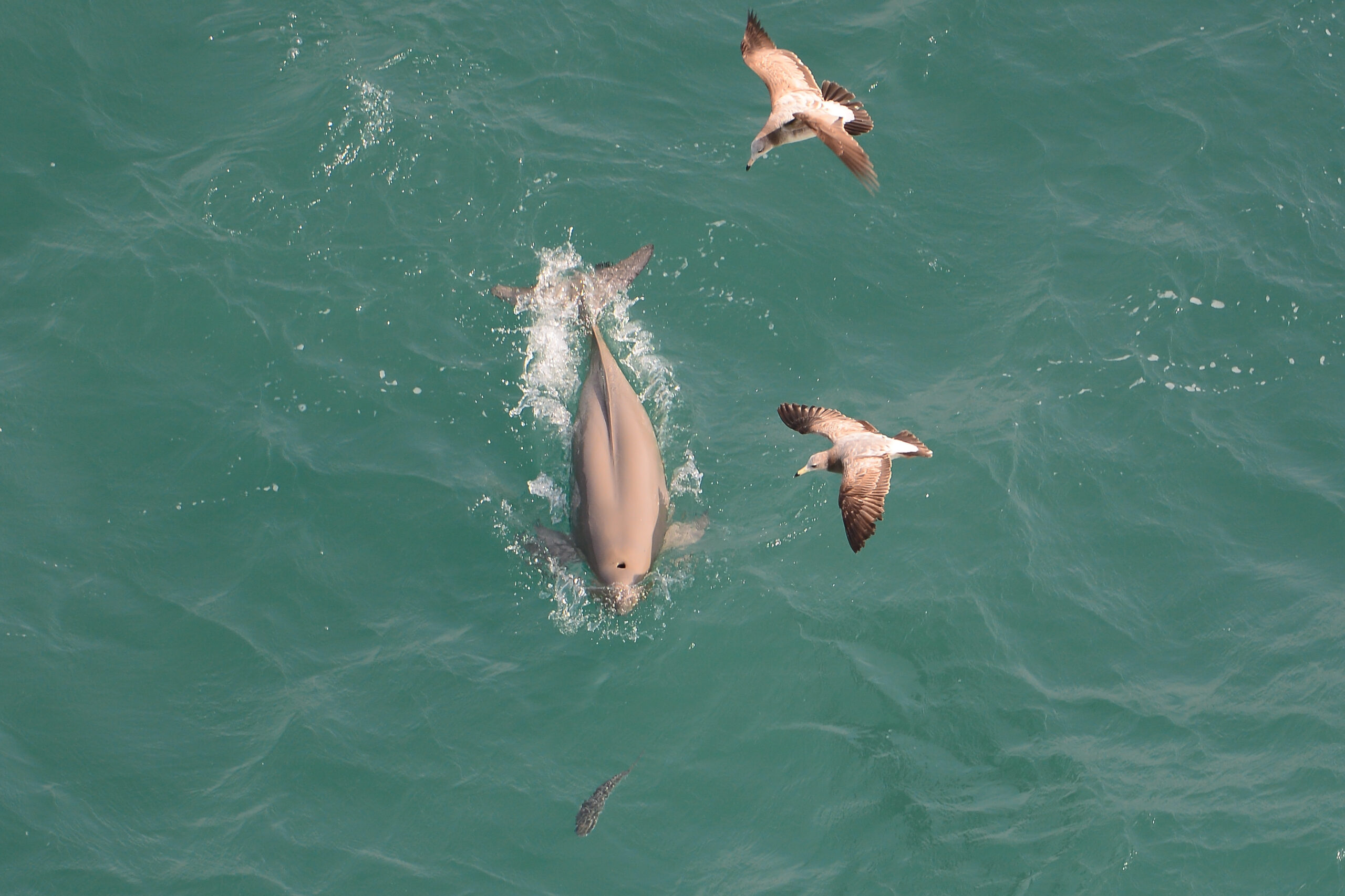
The Indo-Pacific Finless Porpoise is found in shallow coastal waters, primarily around Asia. These waters are often polluted by plastic waste, chemical runoff, and heavy metals. The porpoise’s small size makes it vulnerable to entanglement in fishing gear and ingestion of harmful materials. Their populations are declining due to habitat destruction and high levels of ocean pollution. Conservation is critical to prevent their extinction.
Atlantic Bluefin Tuna
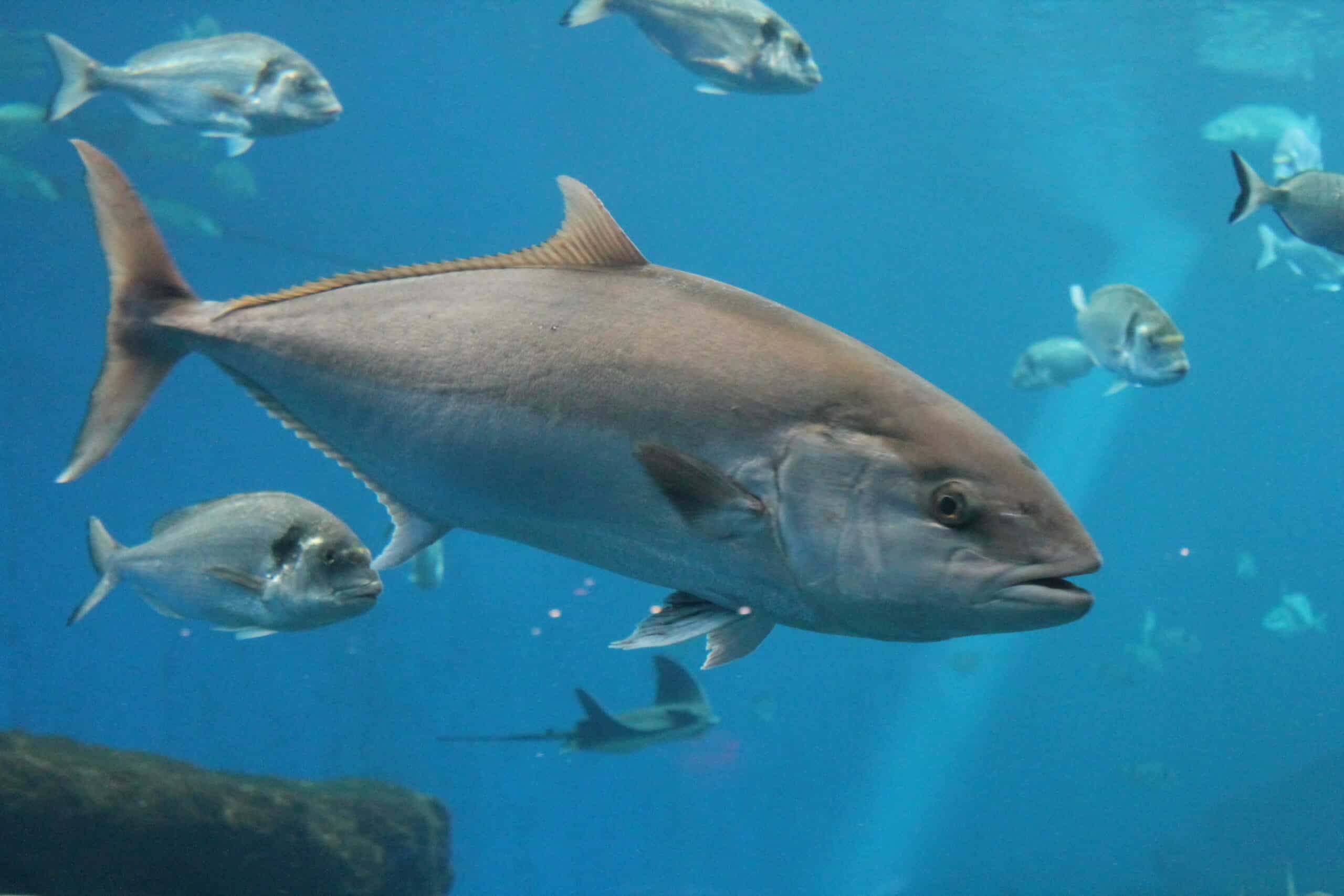
The Atlantic Bluefin Tuna is one of the most commercially valuable fish in the world. Overfishing and ocean pollution have decimated their populations. Heavy metals, plastics, and oil spills contaminate their feeding grounds. These pollutants accumulate in their bodies, making them toxic to both the fish and the humans who consume them. The species is now critically endangered, with strict measures needed to protect it.
Galápagos Penguin
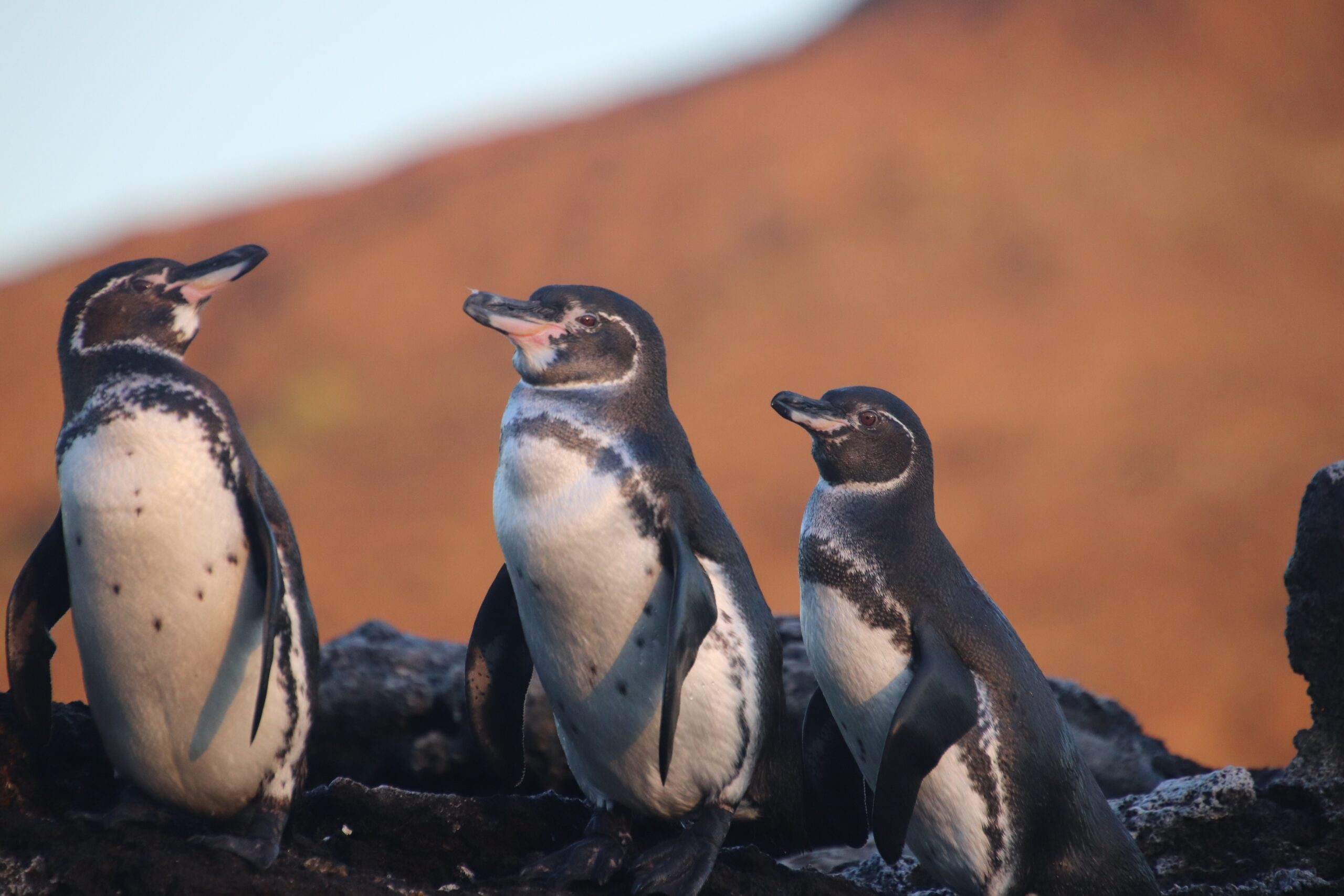
The Galápagos Penguin is the only penguin species found north of the equator. It lives in the unique waters of the Galápagos Islands, where ocean pollution is on the rise. Climate change and oil spills are causing habitat loss and food shortages for these penguins. They are also highly susceptible to changes in sea temperature caused by pollution. Their populations are now critically endangered.
Marine Iguana
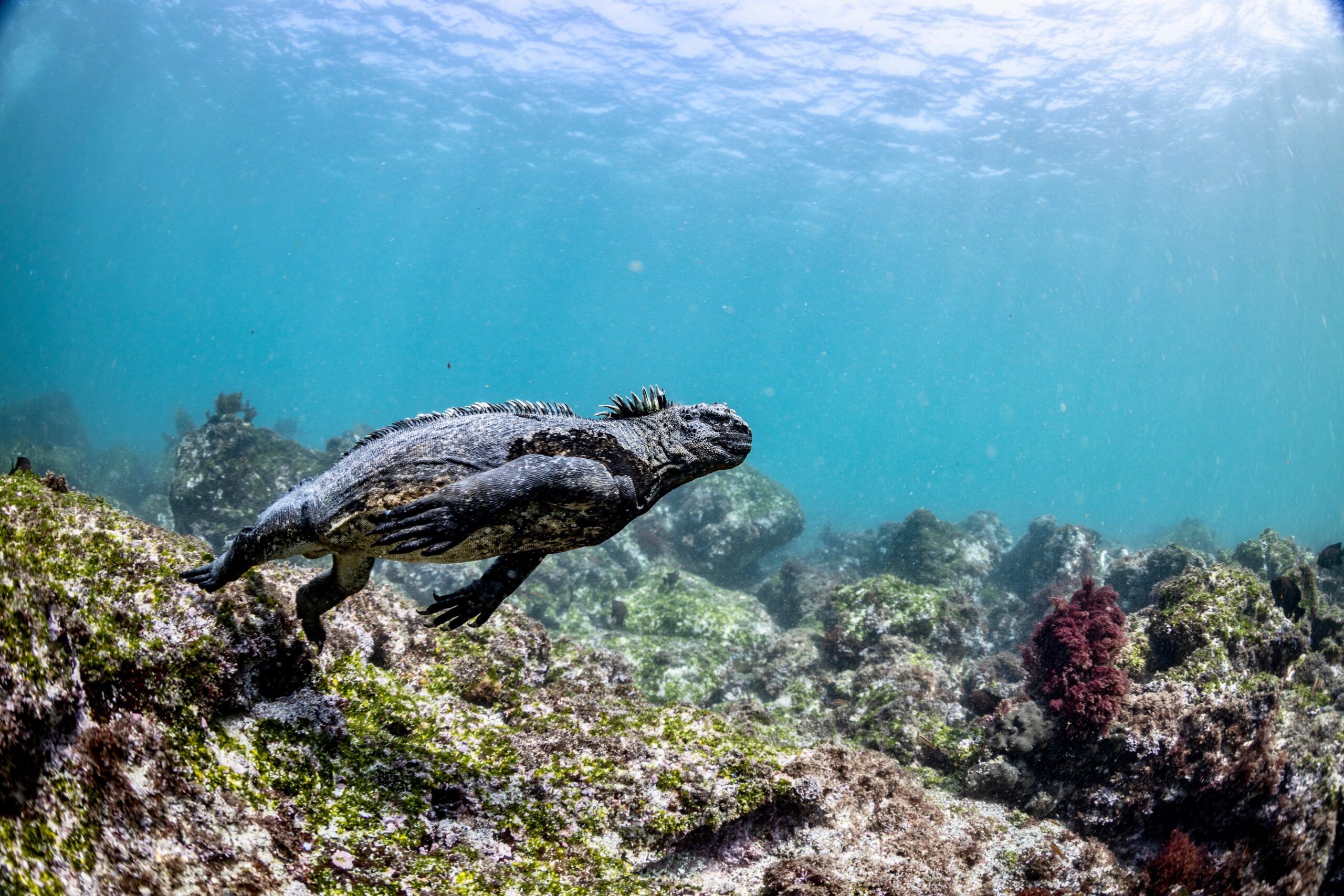
Marine Iguanas are unique to the Galápagos Islands and are the only lizards that can forage in the sea. They feed on algae found on rocky shores, but pollution from oil spills and plastics contaminates their food supply. Rising sea levels and temperature changes are also affecting their habitats. Marine Iguanas are now vulnerable to extinction due to these environmental threats. Conservation efforts are essential to their survival.
Spiny Dogfish Shark
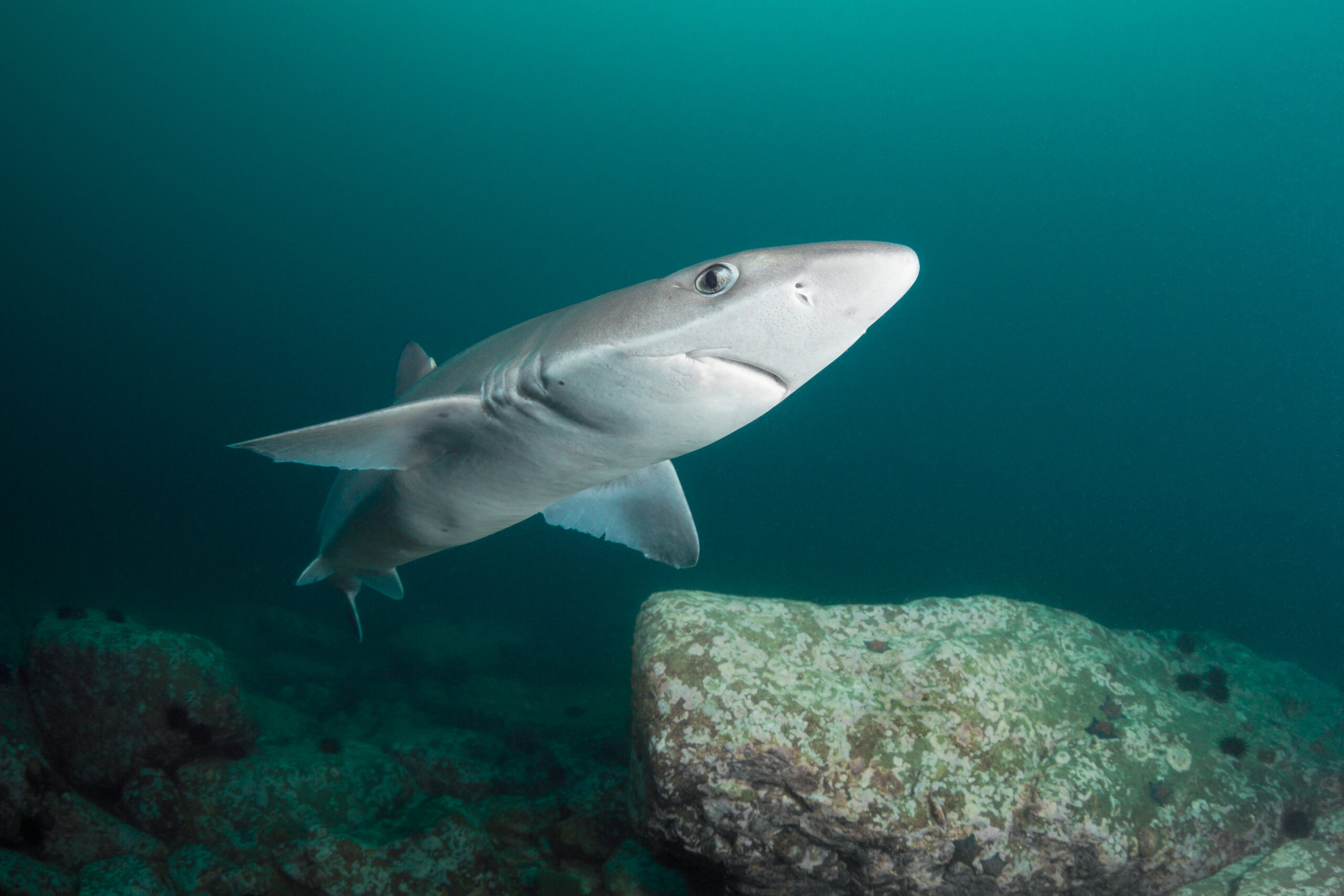
The Spiny Dogfish Shark is a small, slow-growing species found in temperate waters worldwide. They are often caught as bycatch in commercial fishing operations. Ocean pollution, particularly chemical runoff and plastics, contaminates their habitats and food sources. These sharks are highly vulnerable to overfishing and habitat degradation. Their populations are now at risk due to pollution and unsustainable fishing practices.
Shortfin Mako Shark
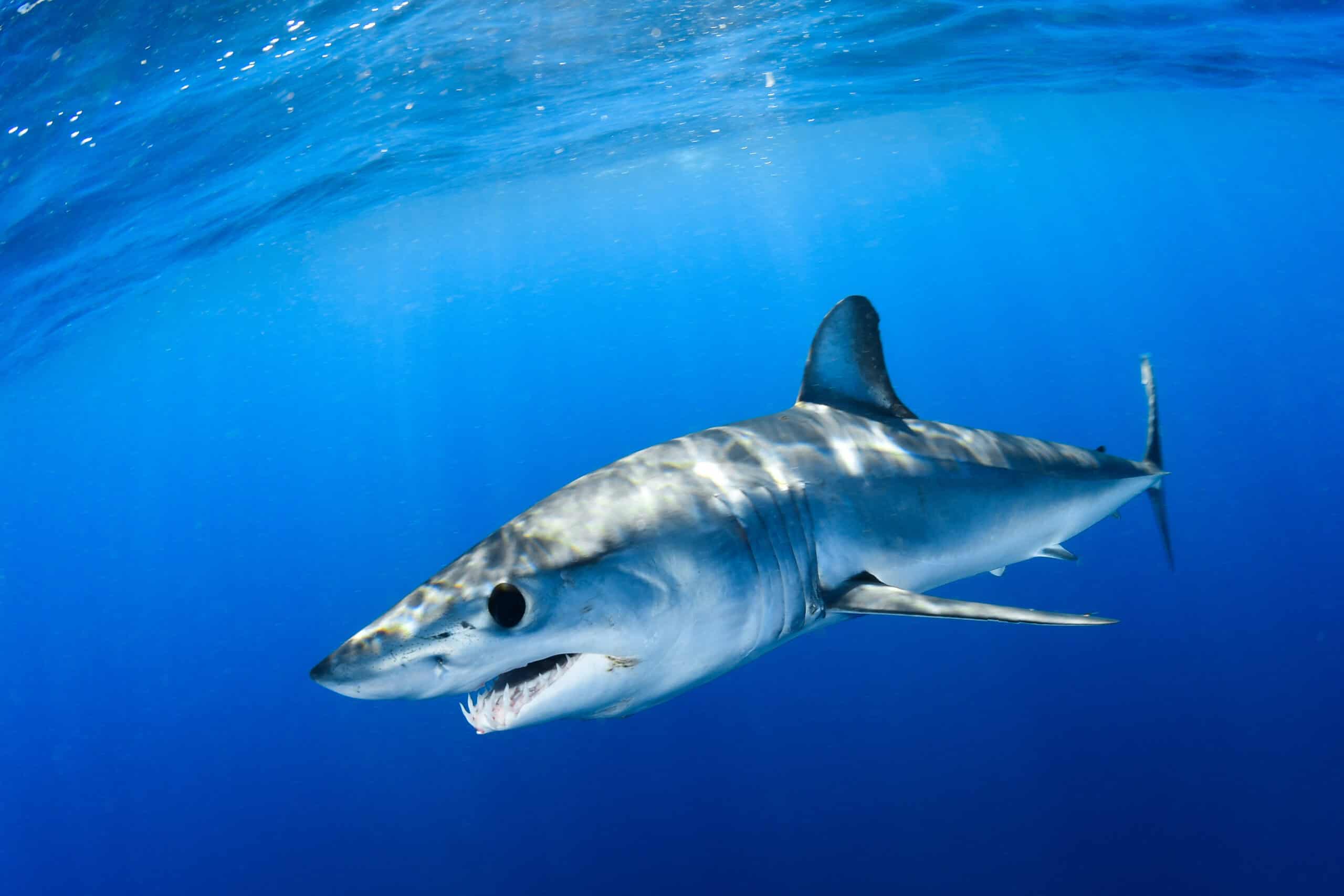
The Shortfin Mako Shark is known for its incredible speed and agility. It inhabits both coastal and open ocean waters, where pollution levels are steadily rising. Heavy metals, plastics, and oil spills disrupt their feeding patterns and damage their ecosystem. Overfishing and bycatch also contribute to their declining numbers. The Shortfin Mako Shark is now classified as endangered due to these growing threats.
This article originally appeared on Rarest.org.
More from Rarest.org
11 Forgotten Calligraphy Styles That Deserve a Comeback

Calligraphy, the art of beautiful writing, has a rich history spanning centuries and cultures. While many people are familiar with popular styles like modern script and Gothic lettering, there are countless other calligraphy styles that have faded into obscurity over time. Read More.
1986 Kennedy Half Dollar Value Guide
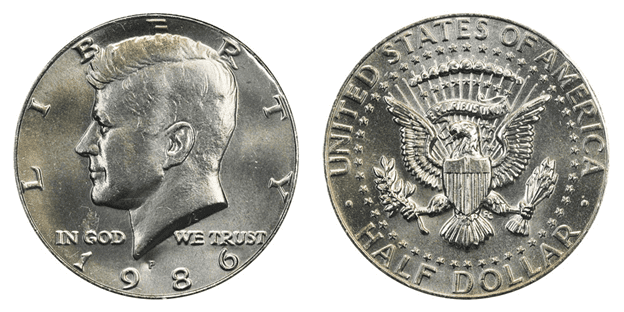
Both collectors and non-collectors save the Kennedy Half Dollar, one of the most well-known and treasured coins in memory of one of the most admired US presidents—John F. Kennedy. Read More.
1961 Jefferson Nickel Value Guide

The 1961 Jefferson nickel is made of 75 percent copper and 25 percent nickel. From mid-1942 to 1945, the Jefferson nickel was made of 9% manganese, 35% silver, and 56% copper. Read More.
